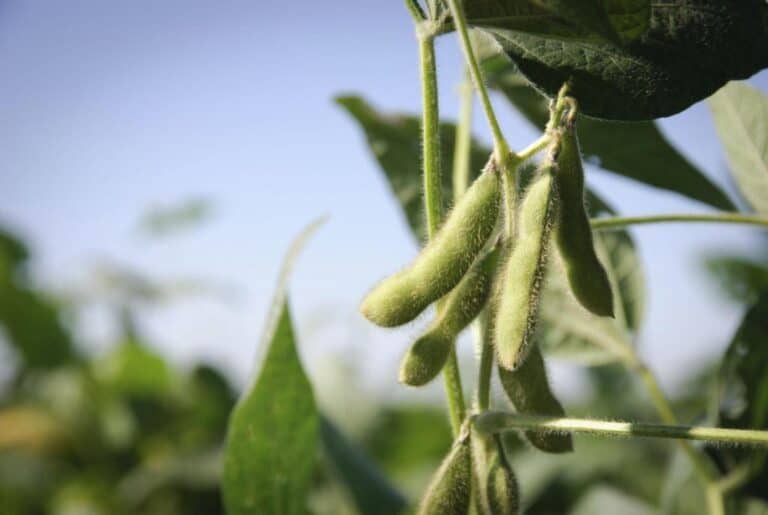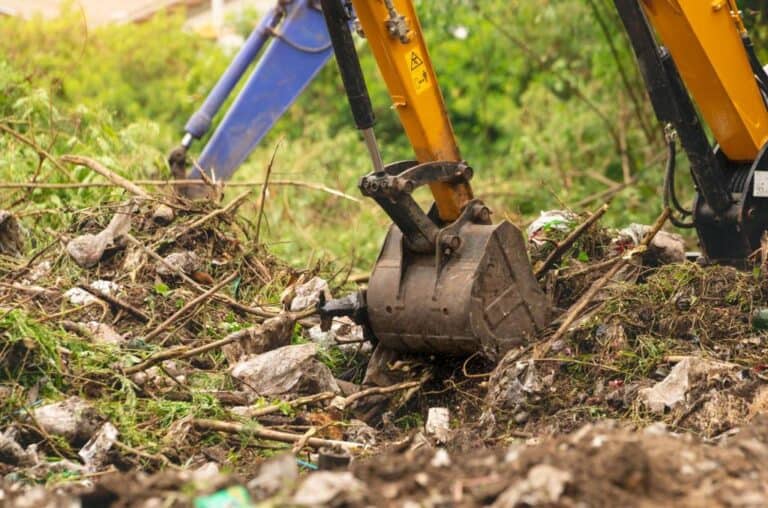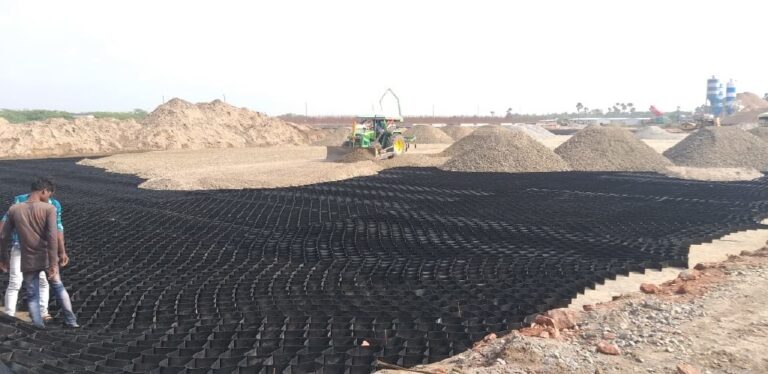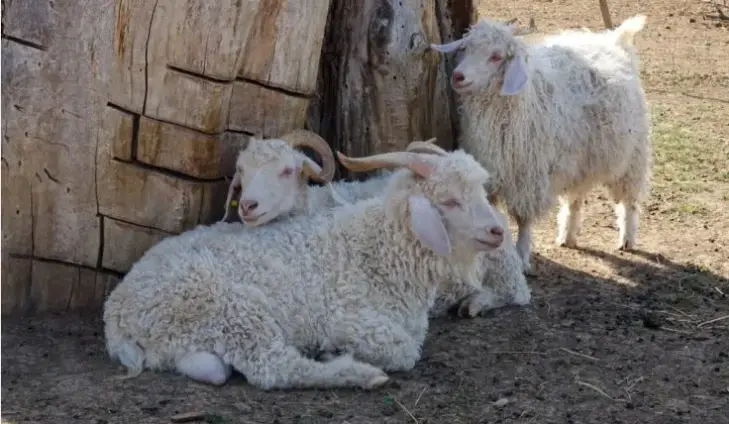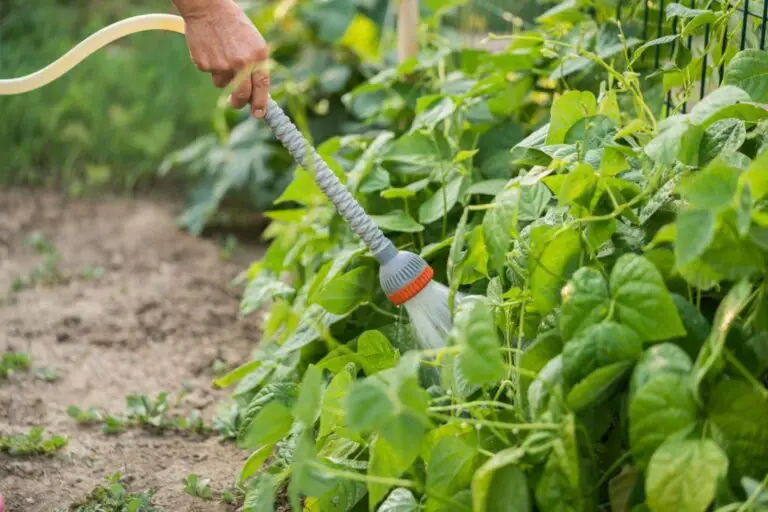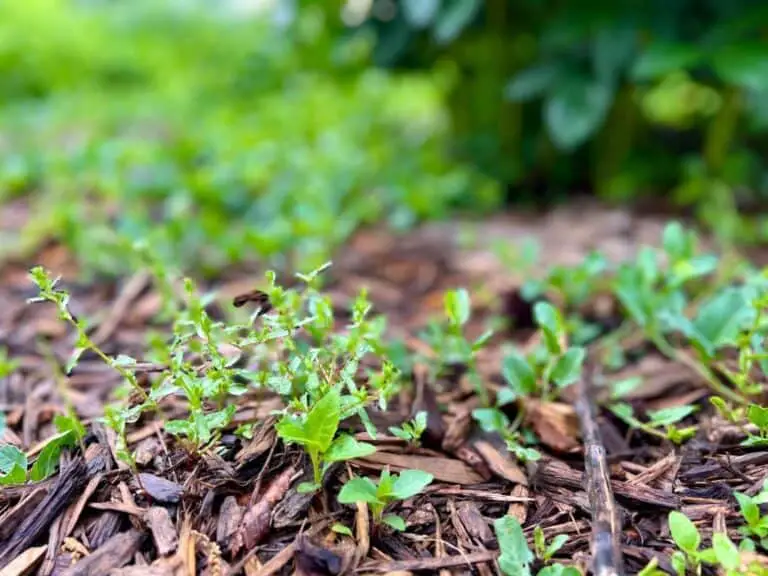How Far Apart to Plant Green Beans? (Spacing in Pots & Raised Bed)
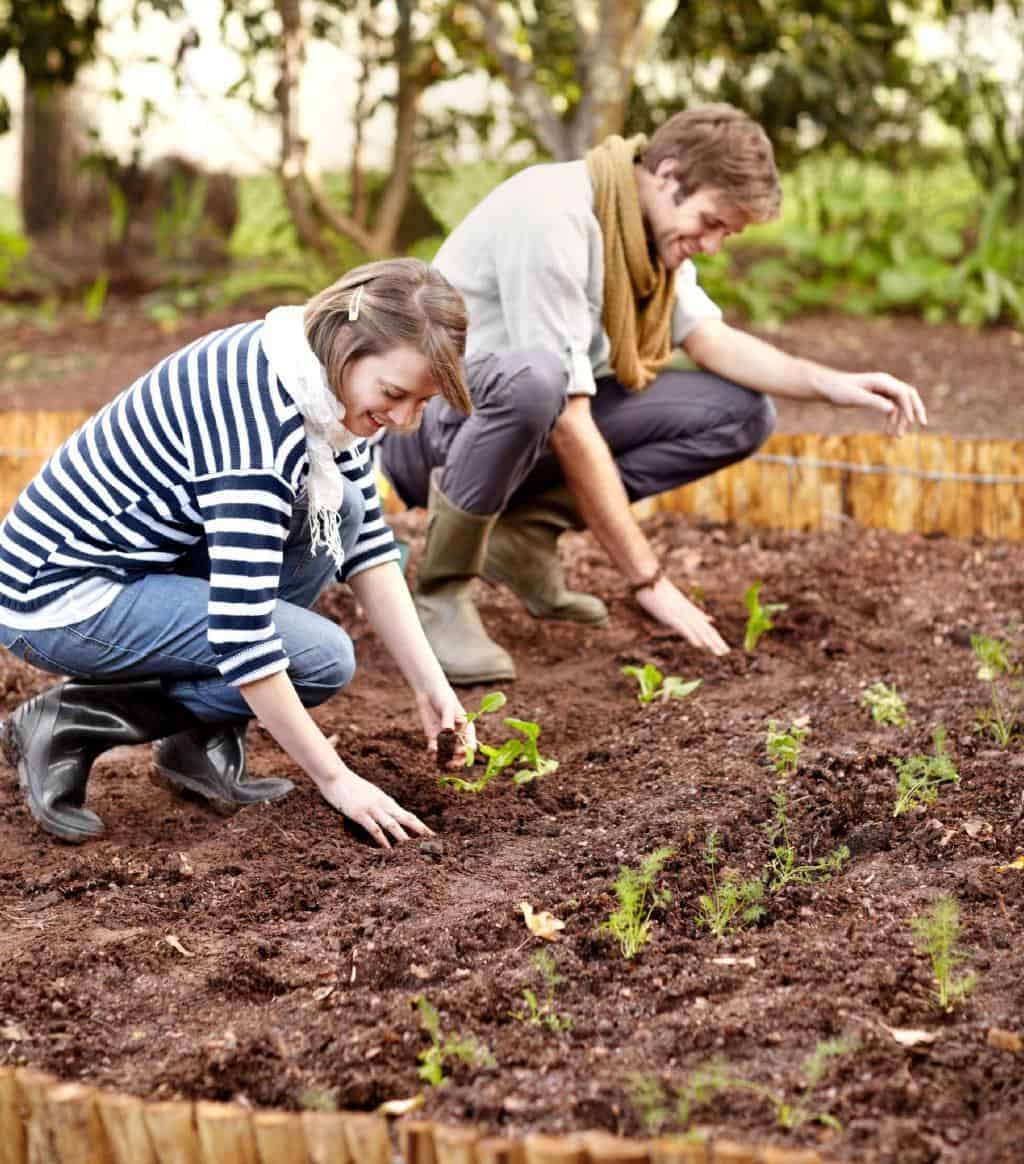
Green beans are one of the most popular garden crops because they are hardy and easy to grow. They’re relatively low maintenance and require minimal space for growth.
Planting green beans—also known as string beans, snap beans, or haricot vert—can be simple, but successfully harvesting them requires more than just throwing the seeds into the ground.
To make sure your beans turn out their best, it’s important to understand how to space them properly when planting. Different varieties of green beans have different spacing requirements. This is also true for the medium where you want to plant: garden, pots, raised bed, etc.
In this article, we provide an ideal way to space your bean plants so they get all the sunlight, water, and nutrients they need for maximum yield. We also pay attention to how far apart the trellises are and how many seeds to plant in each hole for the best planting.
Planting Preparation for Green Bean Seeds
Planting green bean seeds can be a rewarding experience and an easy way to enjoy fresh vegetables from your own garden. Knowing the proper preparation steps is important for ensuring maximum success with your crop.
Before planting, there are several things to consider:
- Make sure you have quality seed available to plant. You can purchase bags of seed from your local home and garden store or online. If you want organic seeds, look for varieties labeled “certified organic“.
- Soak them overnight in warm water before sowing them into the ground or containers. This softens the bean’s tough outer shell and makes it grow faster when planted outside in a garden bed or container.
- Once they are soaked overnight, make sure they dry completely before sowing them into prepared soil so they don’t rot before they sprout.
- Spread a layer of compost over the planting area and mix it into the soil. This will provide essential nutrients that will help on how green beans grow strong and produce plenty of delicious vegetables. For best results, use a raised bed.
- When you’re planting your green beans, make sure that the soil is loose and well aerated. If the soil is too compacted or contains lots of clay, plant your green beans in pots or containers instead.
- Because beans have shallow roots, you must keep your garden free of weeds and grasses.
- Green beans do not require fertilizer throughout the growing season because they fix nitrogen into the soil on their own.
How Far Apart to Plant Green Beans?
Green beans come in two major varieties or types of beans: bush beans and pole beans. Bush beans, just like their name suggests, grow into small bushes about 2 feet tall and wide. Pole beans are a vine plant and need some support to climb. They will end up between 8 and 20 feet long, depending on the variety and support given.
Plant bush bean seeds 2 inches apart, then thin them to 4 inches apart when the plants reach 3 inches in height. Make rows 3 feet apart from the center to give the plants room to grow and some space to walk through.
Plant pole beans 3 inches apart, then thin them to 6 inches apart when they reach 3 inches in height. Rows of pole beans will need to have supports for the beans to climb. Make rows about 2 feet apart so that you can walk through to apply fertilizer and do pest patrol.
Plant the bean seeds in the ground 1 inch deep. To thin plants, take out smaller plants and plants that are too close together. Cut the plants with scissors just above the soil. Don’t pull them out by hand to avoid disturbing the roots of the remaining bean plants.
What Happens If You Plant Beans Too Close Together?
Planting beans too close together can spell disaster for your garden. If plants are packed too tightly, they compete for nutrients and water, leaving some of them undernourished and stunted. As a result:
- It can stunt their growth due to overcrowding and lack of space for proper development.
- The yields can be significantly reduced or the plants may not survive at all.
- Difficulty in harvesting green beans: When beans are planted too close together, the plants may grow densely and intertwine with each other. This can make it difficult to harvest the beans without damaging the plants or leaving some beans behind.
- Increase the risk of pests and diseases taking hold in your garden. Since plants cannot move away from each other as they would naturally do in the wild, this creates an ideal environment for insects to spread quickly amongst them.
- Smaller bean size: If the plants are overcrowded, they may not have enough space to produce large, full-sized beans. Instead, the beans may be smaller and less developed.
Overall, it is important to remember that proper spacing plays an incredibly important role when it comes to growing green beans successfully.
Green Bean Plant Spacing In Pot
Either pole and bush beans can be grown in pots. Remember, if you’re growing pole beans, they need support.
You can give them support by placing the container next to a fence or trellis or by placing bamboo poles in the pot and forming a teepee sort of structure that comes together up top in the middle for the beans to climb.
The same spacing as above still applies, with bush beans being 4 inches apart and pole beans being 6 inches apart. When starting beans in pots, place them in an area sheltered from strong winds.
Green beans like full sun, so make sure they are getting at least 6 hours of sun. Beans need a good amount of water, especially around flowering and fruiting, so a big container with multiple plants in it is a good way to go. Make sure the container you’re using has good drainage and is at least 8 inches deep.
Green Bean Plant Spacing In Raised Beds
Bush beans are the common choice for raised beds. You can really pack the bush beans into a raised bed because you don’t need to have an aisle to walk through. Plant rows about 4 inches from the edge of the bed and 18 inches apart.
Pole beans need support either on flat ground or in raised beds. This can be accomplished in any way you can imagine. Making teepees in the beds with bamboo poles is a simple solution.
Make a circle in the dirt with a diameter of 2 feet. Take 8 poles and spread them around the circle evenly. Plant pole beans every 3′′ around the teepees and then thin down to every 6′′ once the plants reach about 3′′ tall.
How Many Seeds per Hole to Plant Green Beans?
When planting green beans, the number of seeds you need to plant per hole will depend on the variety of bean you are planting.
For bush beans, which grow in a more compact form, you should plant 3-4 seeds per hole. If growing pole beans, which can reach heights of up to 12 feet and require something for support such as a trellis or fence, you should only plant 1-2 seeds per hole.
If you plant too many seeds close together, they will compete for resources like sunlight and water, which will cause each plant to make less fruit.
Additionally, soil temperature can play an important role when deciding how many seeds to plant per hole. If temperatures are cooler than recommended for germination and growth, then more seed can be planted to increase your chances of success.
TIPS ![]()
Do Green Beans Need a Trellis or Support to Grow?
It depends on whether the variety you want to grow is a bush bean or a pole bean. If it is a pole bean, it will require some type of support to climb.
You can grow pole beans along a fence or erect any type of structure for the beans to climb. Native Americans would grow beans with corn and allow the beans to grow up the corn stalk. The ways to support your pole beans are endless, and as long as you give these natural climbers a rope to climb, they will make good use of it.
How Far Apart to Plant Pole Beans on a Trellis
Growing pole beans on a trellis is one of the most common ways to grow these popular and versatile vegetables. But how far apart does one need to plant pole beans? Knowing the correct distance for planting is essential for success in the garden.
The space between pole bean plants will depend on their size, as larger plants require more room than younger ones.
Generally, it’s best to plant seedlings 4-5 inches apart for small or young seedlings and 6-8 inches apart for mature plants. For compact varieties that won’t grow too big, 4-6 inches between them should be plenty.
When planting pole beans on a trellis, always make sure there is enough space between each plant so they have plenty of room to grow and spread out while they climb up the supports. This will ensure higher yields and fewer diseases due to overcrowding.
F.A.Q
Can I Plant Green Beans Closer Together If I Have Limited Space?
While it may be tempting to plant green beans closer together if you have limited space, it is not recommended as it can result in reduced yield and smaller beans.
Should I Space Bush and Pole Green Beans Differently?
Yes, bush and pole green beans should be spaced differently. Bush beans should be spaced about 3-4 inches apart in rows that are 18-24 inches apart, while pole beans should be spaced about 6 inches apart and trained on trellises or poles.
Can I Plant Other Crops near My Green Beans?
Yes, green beans can be planted alongside other crops such as corn, cucumbers, and lettuce, as they complement each other’s nutrient needs and growth habits. Just make sure to give each crop enough space to grow and thrive.
Should I Soak Green Beans before Planting?
I should point out that soaking seeds is bad for beans. Bean seeds can be harmed by soaking them in water for just a few hours, because oxygen deprivation in a flooded environment harms the embryos. Planting dry bean seeds into a moistened furrow or bed is preferable.

